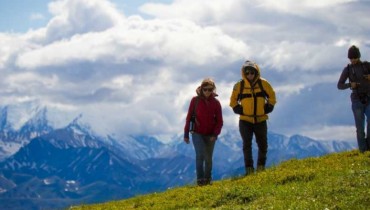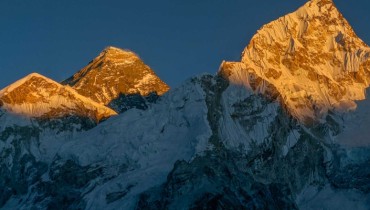Trekking In Nepal

Nepal has pulled in trekkers from around the globe since the 1960s when Col Jimmy Robert sorted out the first organized trek. Trekking has been the main attraction of travelers in Nepal and thousands take to the Himalayas, some doing a couple of long stretches of climbing while others take on a month-long trek through valleys and high mountain passes. Two of the most well-known trekking regions are Everest and Annapurna where a wide range of trails can be followed while the other famous treks are in the Langtang and Manaslu regions. The most demanding is the Great Himalayan Trails, a broad path framework that covers Nepal from Humla and Darchula in the west to Kanchenjunga in the east. The assorted variety of trekking trails in Nepal can't be found in some other piece of the world. Actually, the absolute bottom in Nepal is 59 m above ocean level in the Tarai district while the most noteworthy point is Everest, 8,848m asl, the two focuses being just 200 kilometers separated straight from one point to the other.
Most of the visitors to Nepal come by air and land at the Tribhuvan International Airport in Kathmandu. The trekking permits and other required documents need to be prepared in Kathmandu, either from a trekking operator or from the related offices. These documents should be submitted at the check-posts along the trekking routes. For those with limited time, there are several short hiking trails near Kathmandu valley to witness the massiveness of the great Himalayas.
There is a vast difference in Trekking in Nepal today from the last 60 years while organized treks started in the 1960s. In all the major trekking areas, the National Parks and Conservation Areas, Modern lodges or Tea-Houses have been established where trekkers can find accommodation, and food and meet other trekkers and locals along the way. A majority of the trails are well maintained and directed by route map boards in many places.
Most of the local lodges on common trekking routes with internet and battery charging facilities and the bigger towns regularly have post offices. The length, difficulty and time duration of the treks differ extraordinarily and to add to that once outside of the main trekking areas, transport becomes more problematic and often involves at least two journeys made on domestic scheduled flights. Many treks in Nepal begin with a domestic flight to the starting point and many are in remote areas with no road access. Several days of trekking are required to reach the higher mountain areas from the local centers of population and administration.
Nepal has six different vegetation zones running from Tropical beneath a 1,000 m through Sub-tropical 100m - 200m, Lower Temperate 1,700 m - 2,700 m, Upper Temperate 2,400 m - 3,000 m, Sub-alpine 3,000 m - 4,000 m and Alpine 4,000 m to the snowline, over the snowline it is a Himalaya tundra-like wild. The higher elevation is home to the subtle Snow panther, Himalayan Thar, Musk deer, and other uncommon species.
Despite the fact that the mainstream treks in Manaslu, Everest, Langtang, and Annapurna can give stop settlement, the less frequented treks in those territories and furthermore in different regions west of Annapurna will, for the most part, require outdoors/camping style trek support.
Trekkers can go on the trek in Nepal throughout the whole year. The southern territories of Nepal get more significant levels of precipitation. Be that as it may, a few courses along the Great Himalaya Trails lie in the downpour shadow, a dry region on the leeward side of a mountain, in particular, Mustang toward the north of Annapurna and Manaslu, Dolpo toward the north of Dhaulagiri and the most distant west of Nepal toward the north of Saipal Himal. Post rainstorms the climate will, in general, be clearer. Winter is acceptable yet colder with shorter days and spring can be influenced via occasional downpours and blizzards. Summer is short and is immediately trailed by the storms. Summer treks are normally in the dry Manang and Mustang regions.
Be that as it may, the summer doesn't pour 24 hours per day and they breathe life into dynamite blossoms. It is additionally the ideal time to consider one of the districts in the rain shadow which ordinarily includes an increasingly desolate Tibetan sort view rather than the greenness on the other hand.
It is important for visitors to know that the main income-generating activity of the people from the mountain regions is tourism, and they typically earn wages working as trekking porters or guides. Hiring a porter does not mean that you are weak, it means you value the Nepali culture, you are providing an extended Nepali family with an income and at the same time, you are making a friend and trekking with a local person who is well-known in the local cultures, festivals, and all the other issues that can turn a good trek into an amazing experience of a lifetime.
It is doable to trek alone or without a local support/guide, but you need to know what to do in extreme weather conditions, zero visibility and plunging temperatures at possibly 5,000m? Make sure you have all the necessary permits and be aware of the environment and local culture.
Quick Inquiry

Easy Trekking in Nepal | Moderate Trekking in Nepal

UNESCO World Heritage Sites of Nepal


